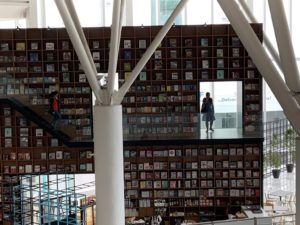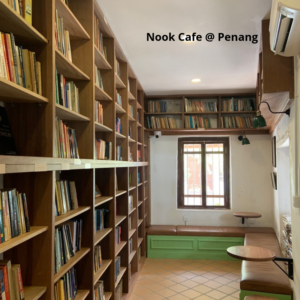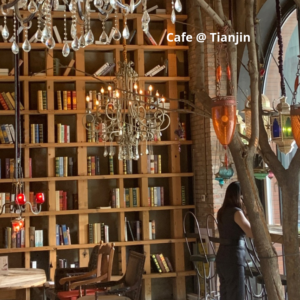Another one bites the dust! MPH is closing its last 2 bookstores in Singapore by end of July and September 2019.
End of a chapter
The curtain has fallen for another book store chain and so will a part of my growing up memories. I have loved books for as long as I can remember. My grandfather used to run a little book store and I had been surrounded by books since I was very little.
Back then, large book stores were a rarity in Singapore. The iconic red and white brick building at the corner of Stamford Road which housed the flagship store for MPH was more than just a store. This was a place where I could get lost for hours amidst books, and more books
The Defining Plot Twist
High rental costs for both outlets and intense competition from online players has made it no longer sustainable for business.
Nevertheless, MPH is not the only brand to have folded under the evolution of the retail landscape, it has precedence to study from. A 2017 article from Straits Times talked about the rise and fall of 5 Singapore book stores. The common threads are the rising rentals, changes in reading habits, dropping profits, and not even a revamp in the book assortments and merchandising helped.
The fall and closure of Borders in 2011 should also serve as alert for brick and mortar retail business.
Borders had built a reputation on offering a large assortment of books, size was its advantage. Over time, reduced footfall and a high cost per transaction makes it unsustainable. With so many people going online to buy books, Borders lost out.
They last reported a profit in 2006 and 5 years later, it filed for bankruptcy protection and was eventually closed.
This storyline is all too common for many brick and mortal retail stores. Unless there is drastic rethink on the business model and experience design, it spells inevitable ends for brick and mortar book store brands.
The turning pages
Emergence of online players
I started buying book from Amazon.com as far back as 1997 and I remember the first book I bought was “Crossing The Chasm” by Geoffrey Moore. In fact, that was the only time I had bought anything online and I was hooked after that. Price was immaterial compared to the convenience and wide assortments made accessible. Today, over 80% of my purchases of anything were made online.
My visits to physical stores are highly selective and only reserved for items that require personal interactions.
Numbers that don’t add up
The success of brick and mortar stores depended on getting critical mass in traffic count. Stores at real estate with high traffic count usually come with higher rental.
The projected sales need to yield the desired revenue to cover for the premium in rental. Failing which, it makes no business sense.
It is important to recognize that a bigger store does not necessarily reap proportionate increase in transaction. While a larger space may facilitate design of a better experience, it only makes sense if it generates a higher rate of return.
Assortment and Inventory
Brick and mortar stores will always have limitation on the range of assortment they can merchandise due to its shelf space constraints, and the cost of real estate.
Keeping assortment fresh and current pose added challenge with inventory management. Inventory is not assets and becomes liability when there are not enough turns.
Online retail does not need to put a cap on the assortments.
Yet another big store
Despite of these odds, more big format book stores are opening.
I recently visited the Penang outlet of BookXcess. The entire Gurney Paragon outlet is 26,000 square feet. It boasts an impressive collection of books. This new outlet also features the longest bookshelf in Malaysia, measuring at 70 metres in length, as well as another two-storey bookshelf that’s 10 metres!

For a book lover like me, it is bookstore on steroid. I simply love it!
However, I can’t help but wonder if it would also follow the footsteps of Borders once its novelty fades and financial reality sets in.
New Retail Formula
Curated brick and mortar
With the increase on e-commerce, the role of physical retail has to change and be more experiential.
For the same reason, we are seeing reverse play by e-commerce player setting up physical pop-up stores to introduce new experiences.
And there is no shortage of physical bookstores with great experience.
One such great store would have to be Eslite book store at Taipei’s Songshan’s Cultural Park, the Eslite Spectrum Songyan store (诚品生活松烟店). It’s recognized by CNN Travel as one of 14 coolest stores in the world in 2016.
The store houses performance halls, art cinemas and cultural and creative hotels within its premise to deliver new retail perspectives. Its goal is to converge and showcase thousands of cultural innovations.
New ways to scale
Delivering great experience should not come at the expense of financial sustainability. We need to find new ways to deliver value.
While catering to the needs of book lovers who wants to browse, we could merge the physical shopping experience with e-commerce.
Can we invite the customer to order the book online and, while they are at it, recommend other books they could buy together at a concession?
Using expensive real estate to stack books is no longer financially viable, especially for mass appeal bookstores. I believe that rented shop floor needs to deliver more than just physical book sales and generate additional revenue.
Is it possible for the space to serve multiple uses?
Could the physical space be used for event rental? Curated events can contribute to the in-store experience.
At the end of the day, we are talking about how to improve the return on investment.
Collaborate to grow and thrive
The emergence of book and café hybrid spaces is a reflection of rise of new café culture.
We are seeing more cafés are stocked with generous collections of books for its patrons. I have been to a few of these hybrid space in my recent travels.


Perhaps it’s time to change the paradigm of physical book retail beyond the current operation model.
It is conceivable that book retail can take place outside the conventional book store.
Can we consider creating satellite book retail in lifestyle spaces, like café, restaurant, hotel lounges, etc? These external spaces can serve as shop window display, different kinds of books can be curated
The idea of collaborating to grow, merger of two or more different concepts is the way forward is to change the paradigm of the pure-play book retailer.
Shu Fu at habitat by honestbee shows a glimpse of how this could possibly work.

At Shu Fu, one can relax and enjoy a meal in the company of books. And if you fancy any of the books on the shelf, simply scan and buy it on the spot, or online.
Own a niche and build a following
Books and reading are romantic and emotional.
For specialty book stores, it is important to have a following for the brand and a differentiated brand experience.
I fell in love with Tsutaya bookstore at T-site in Tokyo’s Daikanyama.
The book store has Starbucks café in it. But it’s not just a café and book hybrid concept. Designed for an older and more discerning group of customers, it brought in lots of specialty to appeal to the intellectual curiosity of a more sophisticated crowd.
Next chapter
With the injection of new imagination and business savviness, it is possible to write a new chapter for book retail.


Recent Comments